By Sam Beaudoin
As she goes up for a spike in the first set of her match against the two-time defending conference champions Brock Badgers, Britney Veltman hammers the ball and proceeds to land awkwardly on her left leg.
The fourth-year Toronto Metropolitan University (TMU) Bold women’s volleyball player instantly falls to the ground and thinks of the worst.
Silence breaks out among the spectators when Veltman’s left leg hits the ground at the Bob Davis Gymnasium in St. Catherines, Ont. Her family and friends hold their breath as the athletic staff swarms the court.
“I remember laying on the floor, grabbing my teammate’s ankle in fear,” she says.
Negative thoughts start to consume her mind as she stares up at the gymnasium lights from the floor. She’s then met with the sight of her mother and sister in tears.
The outlook of her senior year has changed drastically in a matter of moments, and it’s only her fifth regular season game.
“I remember gripping my mom’s hand from the moment she got onto the court until we got to the car,” Veltman says.
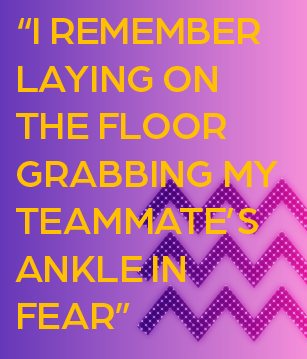
The most heartbreaking moments in sports aren’t always the gut-wrenching playoff losses. Amid rivalry-filled competition, an athlete suffering an injury in a sport they’ve devoted their life to is among the only things that can bring opposing fandoms together. As TMU athletes get back to their feet and wipe off the blood, sweat and tears, it’s in these moments where their dedication and love for the game shine the brightest.
A 2019 article published by Arizona-based multimedia platform Global Sport Matters, examines the culture of “playing through pain” that exists in sports. It illustrates the narrative driving athletes to play through pain and discusses how this bravery is framed as “heroic” behaviour.
“The goals of athletes outweigh the potential consequences of playing through pain, even though pain often points to injury,” the article says.
The article references various other studies furthering this notion, claiming coaches have more respect for their players who play through injury.
Brenda Rogers, a physiotherapist at Physiothérapie Ste-Foy in Québec, says providing athletes with a sense of control in their rehabilitation process always makes the news easier for them to hear.
Throughout her nearly 30-year career, Rogers has learned that athletes are more willing to accept the harsh realities of a diagnosis when they’re provided with options in terms of their next steps.
However, she acknowledges one of the hardest parts of revealing an injury to an athlete is working through their denial. Many often refuse to believe the information presented to them.
“People often listen to the 10th person that tells them…you can’t take it personally,” she says. “The reactions you receive are understandable…sometimes you’re breaking someone’s dream.”
Among the many things Veltman recalls from that dark day in early November 2023 where she tore her ACL is the endless amount of support she received. Whether it was the referees coming over to give her a hug or members of the Brock team reaching out via Instagram to express their support, the colour of her jersey didn’t matter at that moment in time.
“The amount of support was overwhelming…every single person on my team gave me a hug.”
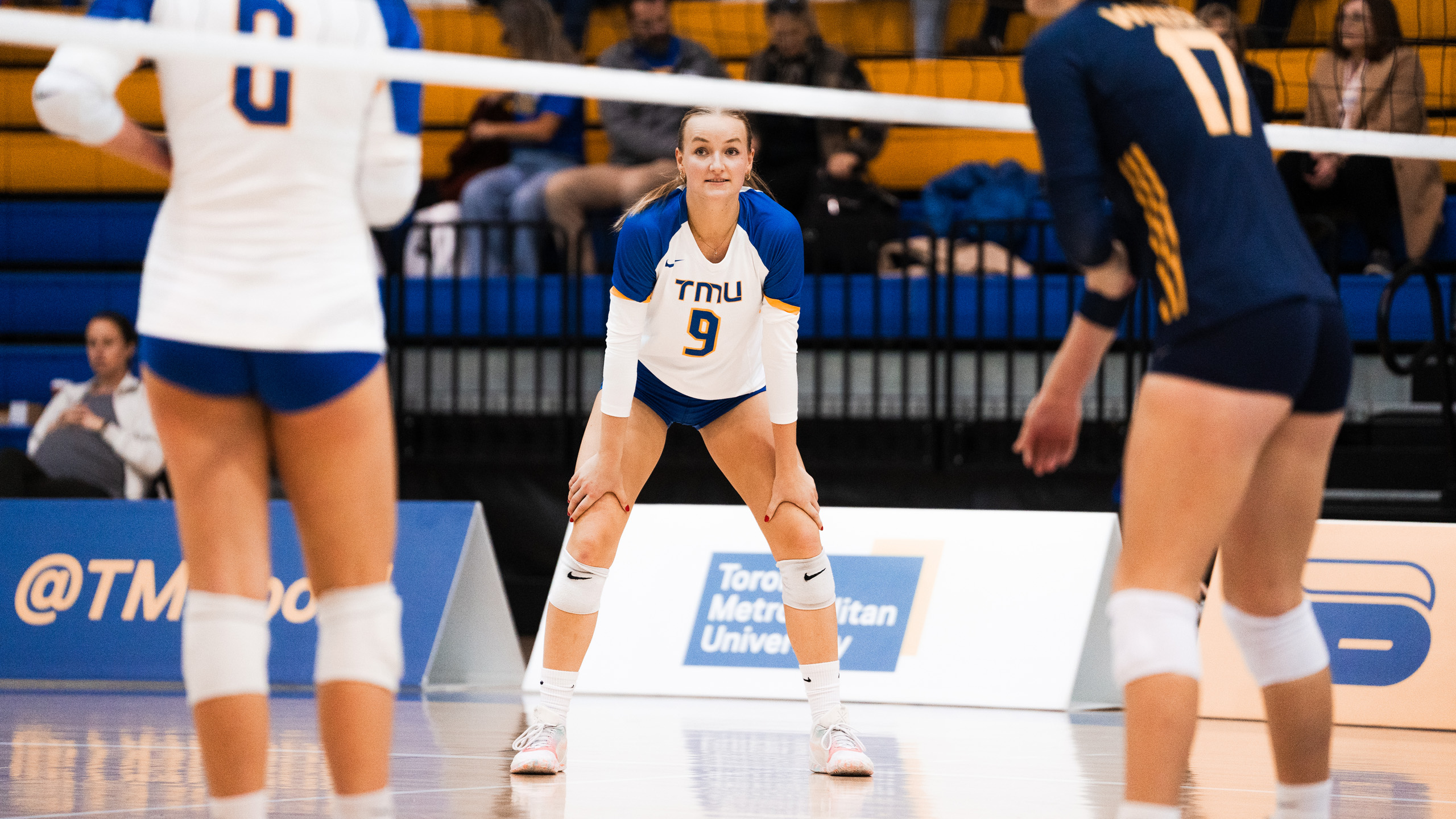
Following an exhausting opening shift of the second period against the Western Mustangs in London, Ont., Will Portokalis returned to the TMU bench. As the second-year men’s hockey forward hung his head over the edge of the boards in an attempt to catch his breath, a puck inadvertently flew into the bench and hit his nose.
Though he avoided significant injury throughout his entire Ontario Hockey League career and his first season with the Bold, that luck vanished in October 2023.
“I didn’t see it, but I knew right away because I couldn’t breathe anymore,” he says. “I looked down and my jersey was just filled with blood.”
Portokalis immediately ran down the tunnel with a towel over his face, quickly absorbing the blood pouring out of his nose. As he reached the locker room, the athletic therapists told him his nose was “literally sideways.”
But the thought of missing the remainder of the game didn’t cross Portokalis’ mind. The Bold forward was ready to hop right back onto the ice with a hybrid visor that covered his face—commonly referred to as a fish bowl.
“They stitched me back up and I was like ‘Put the fish bowl back on, I’m going back out there’ and they just laughed at me,” he says.
According to Ryan MacDonald, the manager of sport performance for the TMU Bold, injured student-athletes are initially assessed by student-athletic or certified athletic therapists on a case-by-case basis. Depending on the severity of the injury, athletes need to be cleared by either a doctor, a certified athletic therapist or a student-athletic therapist before returning to play, MacDonald says.

After a brief stint of going back to the standard visor, Portkoalis broke his nose again in late January during a game against Nipissing. The training staff recommended the forward wear a fish bowl for the remainder of the season to prevent his nose from “falling off” if he were to be hit again.
Athletic therapist and kinesiology professor at the University of Winnipeg, Glen Bergeron, believes two critical elements play a factor in an athlete’s desire to play through the pain.
“Number one is peer pressure, the mentality of taking one for the team and the game,” he says. “The second being the fear of being replaced, the mindset of if they’re not out there, someone will take their place.”
Bergeron says sports culture enforces these narratives, with athletes labelled as courageous and identified as heroes for sacrificing their physical health to win.
Portokalis praises the work of the Bold training staff for always being clear with athletes and allowing them to have a sense of control in the decision-making process.
“They’re good in the sense where they explain where they’re coming from,” Portokalis says. “They cater to our needs, with respect to their own expertise.”
Despite not spending much time with the training staff, Portokalis ensures they’re aware of his passion for the sport and desire to not miss a second of action.
“We just love the game so much,” he says. “Seeing a guy who’s battling an injury day-in and day-out go out there and still get the job done…just motivates everyone.”
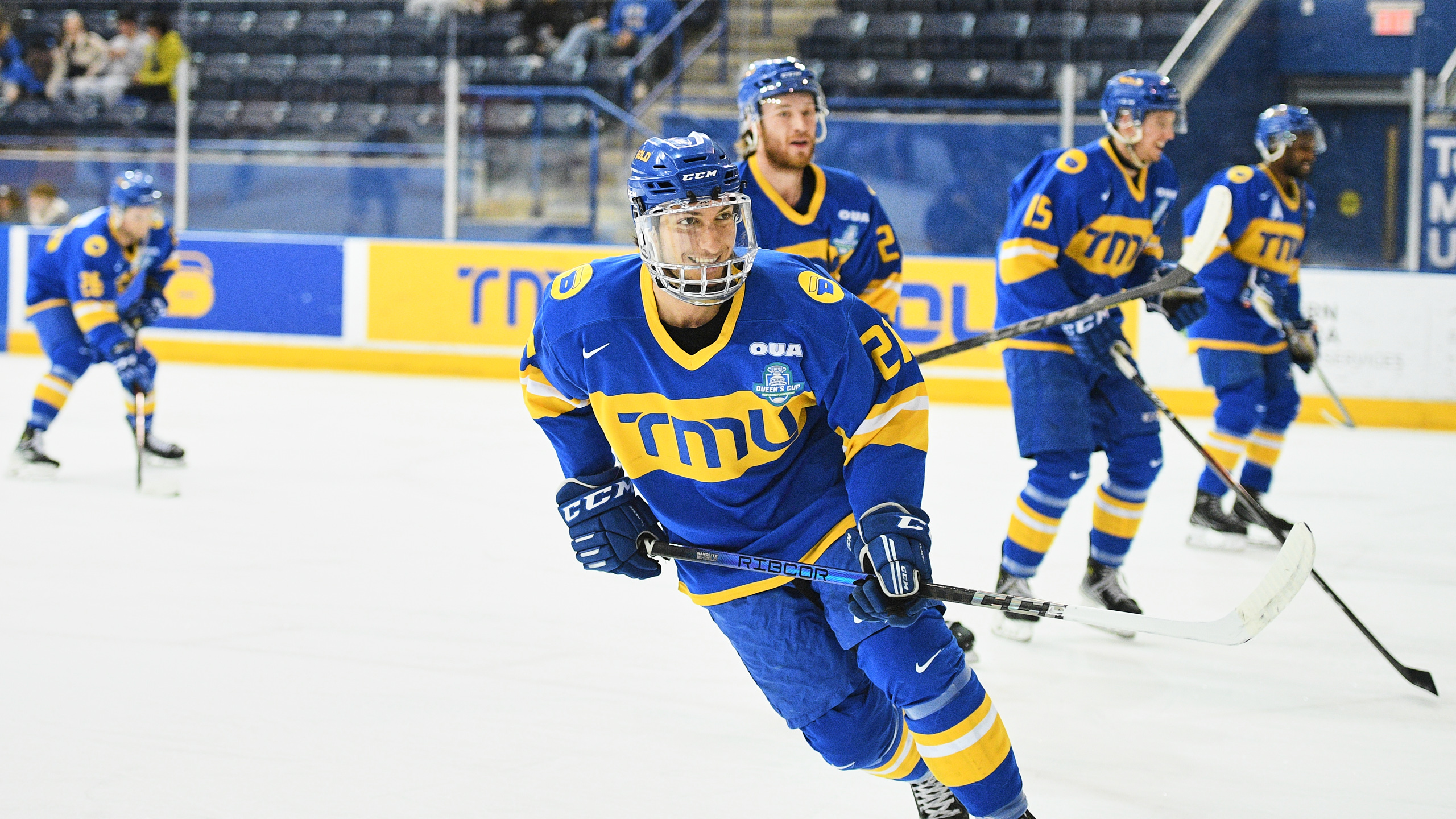
Kait Nichols sits in the Mattamy Athletic Centre’s (MAC) athletic therapy clinic in overwhelming disbelief and pain. The first-year women’s basketball guard’s now-injured left knee is met with a unique sensation. As the doctors confirm the complete tear in her knee and cover it in ice, she quickly begins to realize the extent of her injury.
“Ice isn’t supposed to hurt; the pain was just pulsating…that’s when it solidified for me,” she says.
Since suffering a torn ACL, MCL and LCL on Dec. 30, 2022, no individual has spent more time with the athletic staff than Nichols. She hasn’t appeared in a TMU game since suffering her injury.
According to Mountain State Orthopedic Associates, the complete destruction of a knee is one of the most devastating injuries in sports. In Nichols’ case—to make matters worse—the tragedy fell in a meaningless exhibition game against the Humber Hawks.
“They told me straight up, ‘You tore everything in your knee,’” she says. “I remember thinking, ‘How did this happen to me?’”
It was the Bold’s first possession in their first game since coming back from their holiday. Disaster struck as the ball was making its way to Nichols following an opening-tip win. She went to plant her left leg, immediately feeling a shift and hearing a pop. Nichols instantly knew something wasn’t right.
“You just think about everything in that moment,” she says.
Despite her competitiveness and playing in her freshman season, Nichols was given no choice but to have surgery and take the long road back to the court.
“I don’t think there was a possibility of me playing because of how much damage was done,” she says. “If I was able to, I definitely would have.”
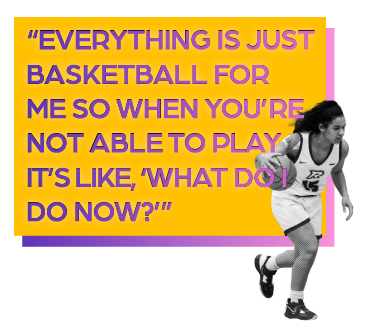
Nichols admits not being able to put on the blue and gold for the last year has been a mental battle. The Hamilton product has played basketball for as long as she can remember, with this injury being the first to force her off the court.
“I’ve been playing since such a young age,” Nichols says. “Everything is just basketball for me so when you’re not able to play it’s like, ‘What do I do now?’”
According to an article titled “Shifting the Spotlight: Mental Health of Injured Athletes” published by Sports Injury Bulletin, the mental effects of suffering injuries often have a harsher impact than the injuries themselves. Heartbreaking sports injuries can result in an increased rate of negative emotions, depression and reduced confidence in athletes.
While Nichols acknowledges the recovery progress hasn’t been easy, she preaches to other young athletes to fight the urge to play through a significant injury.
“As much as you want to play, take the time and you’re going to come back stronger,” she says.
Bergeron says athletic therapists are aware of athletes’ passion for their sports and attempt to do everything in their power to prevent individuals from missing more time than they have to.
Whether it be numbing substances or certain stretches, Bergeron says he ensures his athletes are aware he will do anything he can to get them back on the playing field.
“I am part of this team just like you’re a part of the team,” he says. “I want to win that championship as badly as you do.”
Just a month following Nichols’ surgery, she was back on the court, fetching rebounds for her teammates and doing everything she could to immerse herself back into a basketball environment.
Nichols still recognizes the injury culture that exists in sports today. While major injuries physically prevent these athletes from doing what they love, Nichols admits her mindset of playing through pain will never vanish.
“We’re all just so competitive…you tweak something and you’re determined to play through it until you’re told you physically can’t,” she says. “When you love something, you don’t want to stop for any little inconveniences.”
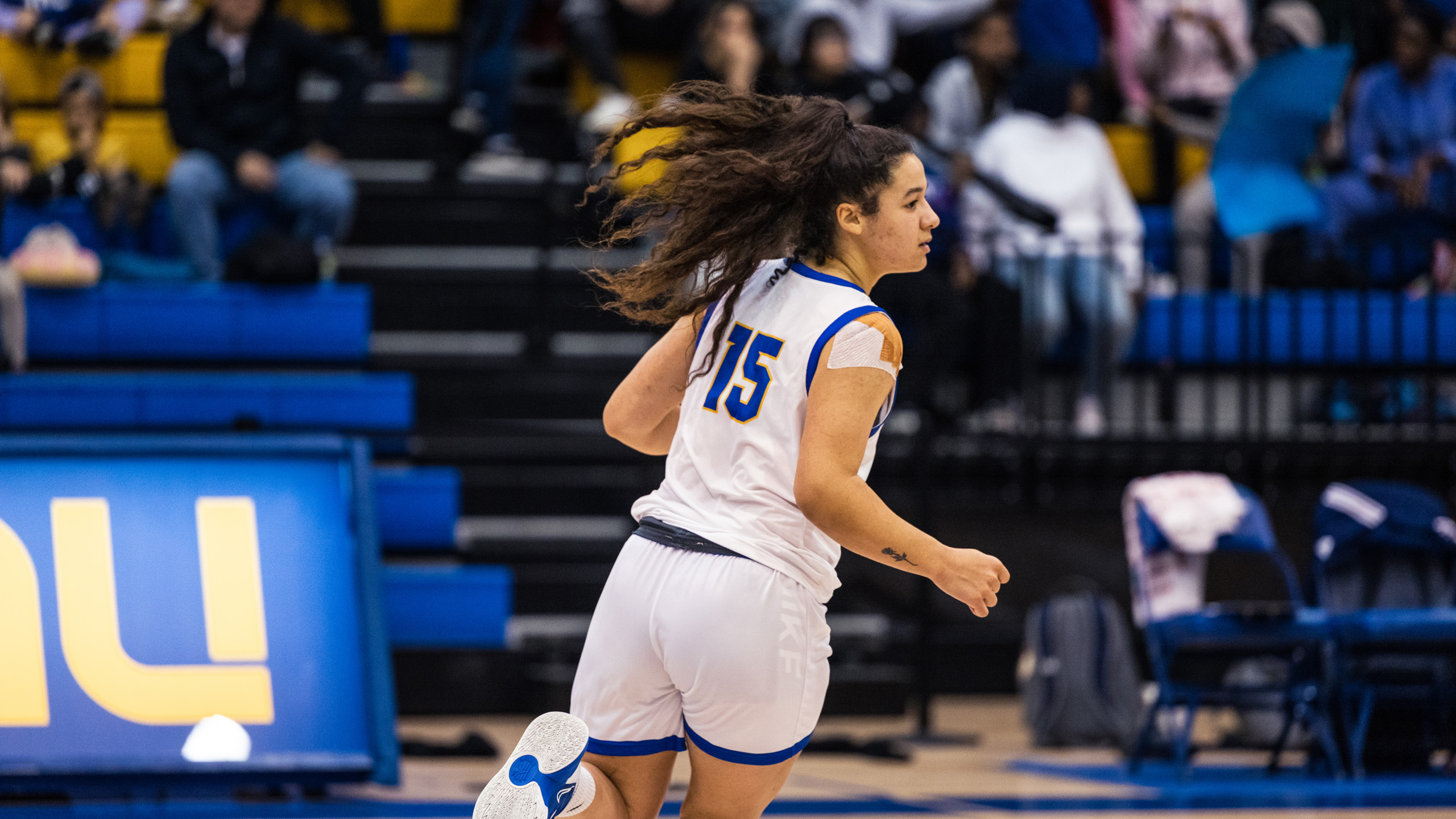
As Veltman works on her jump serve at the MAC, just four days before she is set to make her comeback on Senior Night in February—a night to honour graduating athletes—her return is quickly jeopardized.
She jumps into the air and soon realizes she’s thrown the ball too far to her left, resulting in yet another awkward landing on her left knee.
“It swelled up like a balloon, four days before my Senior Night. I was so pissed off,” she says. “I’m a big believer in ‘things happen for a reason,’ but in that moment I did not want to know the reason.”
Since the beginning of her recovery process, Veltman had Feb. 10 circled on her calendar and was determined to do whatever it took to suit up for the Bold one last time.
Her process back to the court had already begun two days after that
November night when she spammed Google searches to learn more about her newly acquired injury.
“That night, I read so many stories of people that have played with torn ACLs…and decided I want to do that,” Veltman says. “For most of the recovery process, I was focused on how I was going to get back for Senior Night and how I’m gonna play with a torn ACL.”
Despite the reaggravation, that cold February evening rolled around and Veltman’s recovery came full circle as she took the court one final time.
Alongside her sister Lauren, Veltman was honoured before the first serve for her contributions to the program over the past five years. Wearing a brace on her left leg, she favoured her right side as she cautiously moved around the court in her few appearances throughout the game. After the win, she teared up as she waved goodbye to the crowd and her university sports career. Veltman reflected on the game that exceeded her expectations. “Being able to be out there with the girls one last time was amazing.”
She attributes athletes’ desire to neglect pain as a result of their competitive nature and passion for their sport.
“People will do whatever they can just to be able to be out there and play the sport they love.”


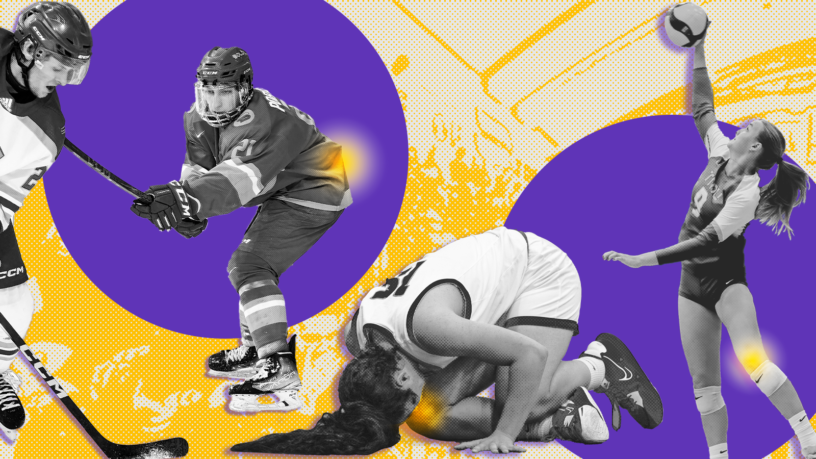








Leave a Reply